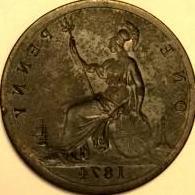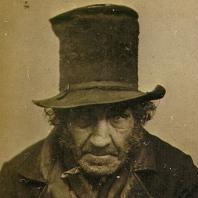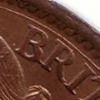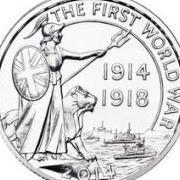-
Posts
796 -
Joined
-
Last visited
-
Days Won
56
Content Type
Profiles
Forums
Events
Downloads
Store
Gallery
Articles
Everything posted by terrysoldpennies
-
Matt. I wondered if you could help me . when I go into Richards coin reference site I find that all the pictures of complete coins open up, but the smaller pictures wont . and the little box with the cross in to press, opens to a card saying I need pass words to continue . Have you any idea why they will not open , is it perhaps that there's to much information for my computer. Terry
- Show previous comments 4 more
-

Haha yes, you should pander him to do it

From what I can tell, it's just to do with how Richard has put the pictures into the site, some are clickable (which opens them up on their own page or in a new page) and some are just not.
The reason some are asking you to log in is because while the pictures are posted in the headsntails site, they are being hosted on his personal site (where the picture actually lives), which is private, and doesn't allow you to view the image until you log in and have been approved by him. Basically the link in the picture is taking you to his private site which won't show.
Hope that makes sense.
-

-

Not deliberately to block the pictures, but because he already had the pictures on his first site it is 10x easier to just copy them over instead of making new pictures.
It might be quite a big job for him to do that, it would be easier for you just to have access to the other site, which I'm sure he won't mind, but it does mean you need an account at wordpress. It's not all that easy to get one though because you need to make a site first, but to sign up is free. Happy to create an account for you if that's easier, so you can just use the log in. I'll send you a personal message if so because you'll need a password and these messages are viewable by everyone.
Matt
-
Jerry. did you see my post on colons in more pennies on Friday, I would welcome your opinion. Also have you come across anybody else with the 1860 2* 145 tooth penny. Terry
-
Richard , did you see my post on colons in more pennies on Friday , I would welcome your opinion . Terry
-

Terry, I did see your post and have looked at many of these pennies myself. As I say on my varieties website, I'm confused by them. All the pennies with either close or small colons (or both) show the incuse lines engraved on the bun (and the almost disappearance of the teeth into the rim) which suggests they are late stages of modification of the 4 die. The suggestion is that the colons have been re-entered onto a die with missing colons (which also has the lines on the bun) but there are many different "re-entered" colon types which suggests that there must have been many missing colon dies which have had the colons added back, in varying positions. But the missing colon variety (BP1860T) is very scarce and almost certainly (?) from a single die (although I have yet to compare all the known specimens to confirm that). There are other anomalies (see website again) which to me suggests that Michael Gouby's analysis of the nature and sequence of modification may not be absolutely correct. I still want to find time to do much more work on this and will keep you abreast of my thoughts/findings.
Richard
-

-

-
-
Hi Prax, about your 1934 missing waves. is it from the Workman collection , only I have two the best being VF-EF, as I wonder as to how rare they are , and what the possible numbers there might be of this type. Terry



